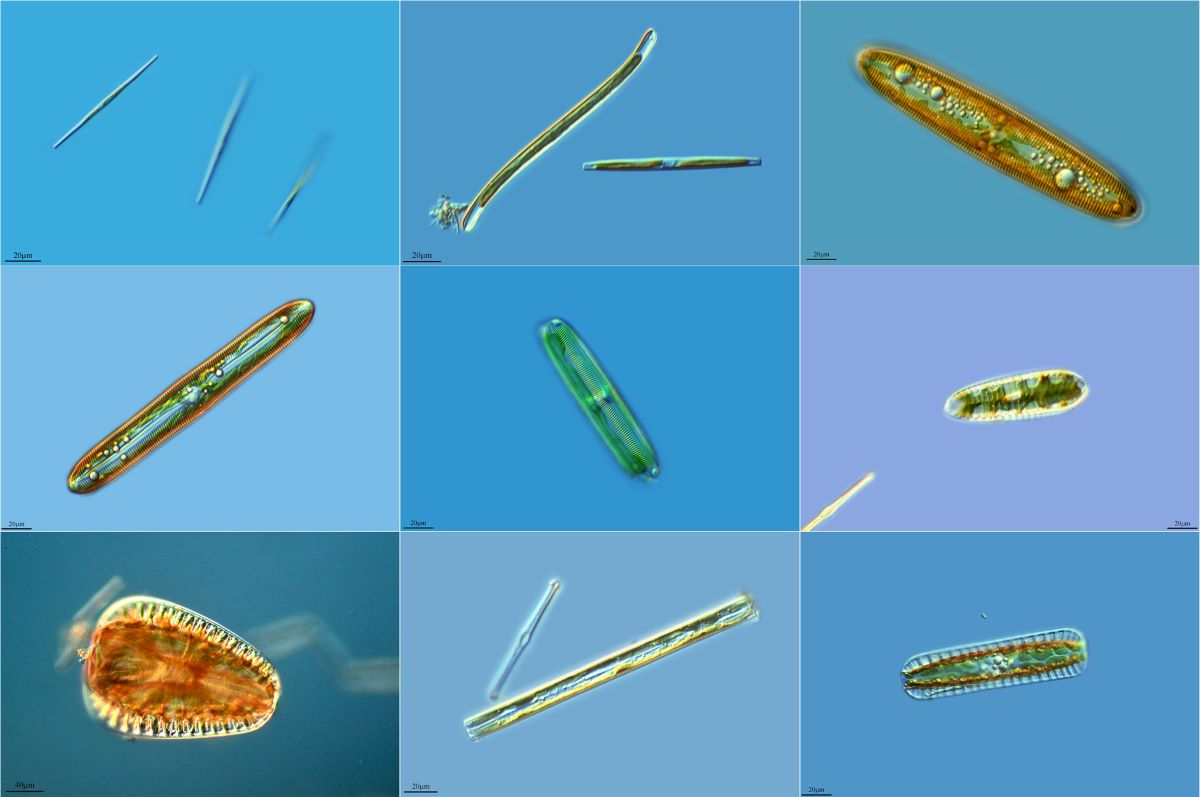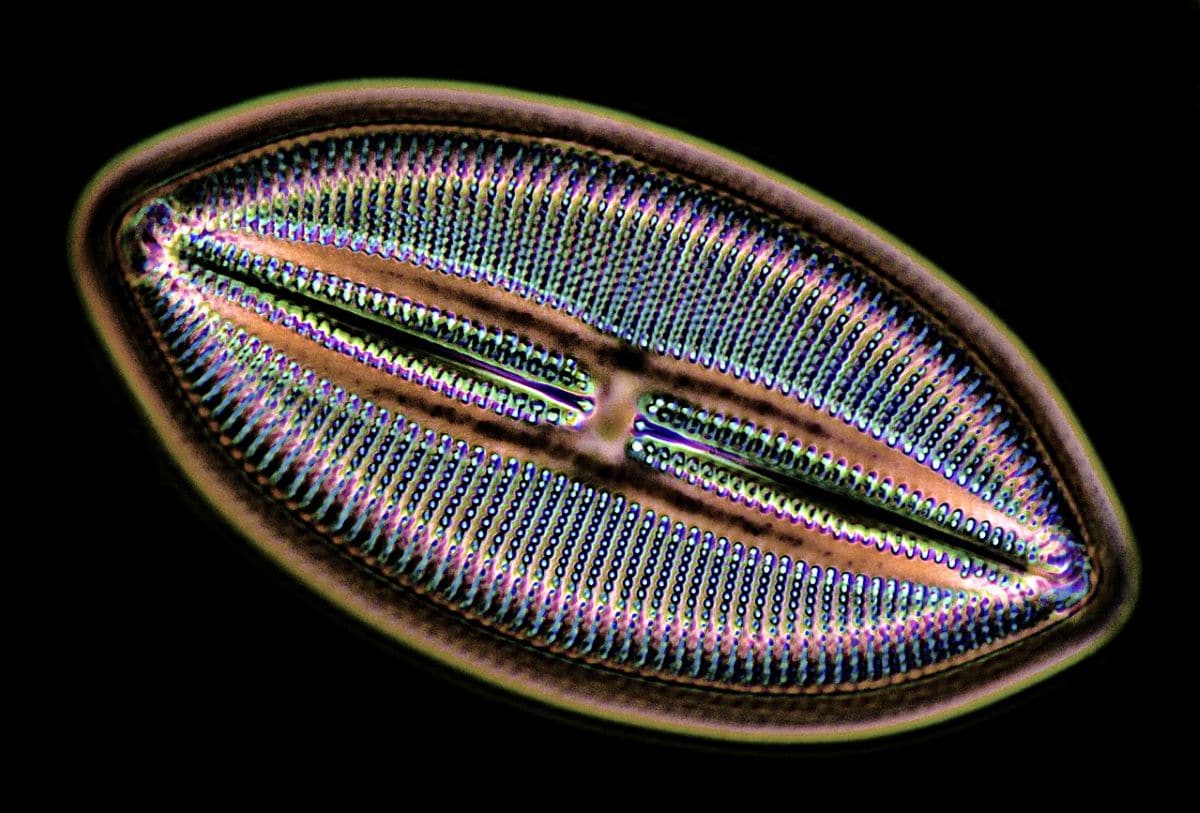
Image - Flickr / Water Project
Diatoms are microorganisms that we can find in the seas, swamps and rivers. They are not seen with the naked eye, but thanks to specialized microscopes it is possible to distinguish a wide variety of different species. In fact, 20.000 have been found.
All of them are part of the phytoplankton, which is made up of a series of aquatic organisms that carry out photosynthesis. They are very important for life on Earth, as they produce more than half of the oxygen we breathe, and they also absorb a large amount of carbon dioxide (about 10 gigatons a year according to National Geographic).
What are diatoms and what are their characteristics?

Diatoms they are mostly microscopic algae belonging to the great group of the Heterokontophyta. In it are brown and heterotrophic algae, such as oomycetes. They do not have flagella, so the vast majority of species cannot move on their own; although there are others that can, by contracting their cell wall.
Normally they are made of a single cell, although it is important to clarify that there are some that form cell chains, such as those of the Fragillaria genus. What's more, have a cell wall, called a frustula, that protects the nucleus is made of silica, which is one of the materials with which humans make glass. Its shape varies, but you can see two different parts that divide them.
To avoid sinking, what many species do is regulate the lipids they contain inside the cell. What's more, as they tend to form chains, the risk of sinking is lower. And not only that, but that way they can absorb more light and, with it, carry out photosynthesis.
Once a diatom dies, either because it has reached the end of its life or because it is ingested, it falls to the seabed, where it sediments. Over time, as more and more diatoms accumulate in the soil, diatomites and moronites form, which are sedimentary rocks.
It is believed to have originated in the Jurassic period, about 200 million years ago. Now, the oldest remains found date from the Paleogene, that is, about 66 million years ago.
What are they for?
Diatoms are microorganisms that They can help us to know what is the quality of the water, or how climate change affects aquatic environments like the sea. What's more, their study allows us to find out how these places have changed over the years.
Another perhaps less known use is that of the fuel production. And is that diatoms are oleaginous algae, which are dehydrated and then subjected to a series of treatments to release all its components. Once it has been made, the oil obtained is used to produce biodiesel.
But also have various applications in gardening, since diatomaceous earth is an effective insecticide that eliminates many of the most common pests, such as aphids, spider mites, mealybugs. and even fleas. What it does is pierce the body of the insect, causing it to die dehydrated. From my own experience, it works quite quickly, and last but not least, it does not leave any residue.
In addition, this interesting diatomaceous earth as compost, because diatoms contain many nutrients, which are:
- Macronutrients: nitrogen, potassium and phosphorus.
- Secondary nutrients: magnesium, sulfur and calcium.
- Trace elements: among others, it contains copper, iron, boron, molybdenum and zinc.
How do they reproduce?
Diatoms reproduce in two different ways: asexual, that is, through cell division, and also in a sexual after several generations, producing gametes that end up merging to form spores (which would become the "seeds" of these algae).
These spores are highly protected by an organic membrane, so they can grow without difficulty, thus starting a new generation of diatoms. Of course, you have to know that, as happens to many plants that are subjected to stress of any kind (heat / cold, lack or excess of nutrients, etc.), they can also spend their energy in the production of spores, although these will only germinate when conditions improve.
What is the habitat of diatoms?

Image - Wikimedia / Massimo brizzi
Each type of diatom prefers a unique habitat. For example, the pennadas, which are those that have both sides symmetrical, we will find them in fresh waters; instead, the centric ones, which are those with radial symmetry and those that also remain immobile, prefer the sea.
Therefore, it is important to take care of the seas, and the planet. Not only for diatoms, but also for ourselves. Remember that they produce more than 50% of the oxygen we need to breathe. It may seem a lie that an organism that rarely exceeds 2 millimeters in diameter can be so important to life, but studies as the one of National Geographic thus demonstrates it.
And even if they haven't, I think that if we take care of the Earth, we will take care of ourselves. Because it is our and only home.